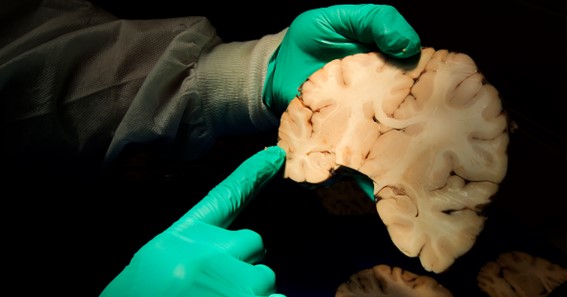Are you curious to know what is cerebellar tonsillar ectopia? You have come to the right place as I am going to tell you everything about cerebellar tonsillar ectopia in a very simple explanation. Without further discussion let’s begin to know what is cerebellar tonsillar ectopia?
What Is Cerebellar Tonsillar Ectopia?
Cerebellar tonsillar ectopia (CTE), also known as Chiari malformation, is a condition where the cerebellar tonsils, which are located in the lower part of the brain, extend beyond the skull opening into the spinal canal. This can cause a variety of symptoms and complications, depending on the severity of the ectopia.
Causes Of Cerebellar Tonsillar Ectopia
The exact cause of CTE is not fully understood, but it is believed to be related to developmental abnormalities during fetal growth. In some cases, it may be associated with genetic factors or other underlying medical conditions, such as spinal cord tumors or hydrocephalus.
Symptoms Of Cerebellar Tonsillar Ectopia
The symptoms of CTE can vary depending on the severity of the ectopia. Mild cases may not cause any symptoms, while severe cases can lead to significant neurological problems. Some common symptoms of CTE include:
- Headaches, especially when coughing or straining
- Neck pain
- Dizziness or vertigo
- Difficulty swallowing or speaking
- Numbness or tingling in the hands or feet
- Weakness or clumsiness in the arms or legs
- Loss of bladder or bowel control
Diagnosis And Treatment Of Cerebellar Tonsillar Ectopia
CTE is typically diagnosed through imaging tests, such as MRI or CT scans, which can show the extent of the ectopia and any associated abnormalities. Treatment options for CTE depend on the severity of the condition and the symptoms present. Mild cases may not require any treatment, while more severe cases may require surgical intervention.
Surgery for CTE typically involves decompression of the skull and spinal canal to relieve pressure on the brainstem and spinal cord. This may involve removing a portion of the skull or spinal bone or making other adjustments to allow more space for the cerebellar tonsils. In some cases, other surgical procedures may also be necessary to address any underlying conditions or complications associated with the ectopia.
Conclusion
Cerebellar tonsillar ectopia, or Chiari malformation, is a condition where the cerebellar tonsils extend beyond the skull opening into the spinal canal. It can cause a range of symptoms and complications, depending on the severity of the ectopia. While the exact cause of CTE is not fully understood, treatment options are available to manage symptoms and improve the quality of life for those affected by this condition. Anyone experiencing symptoms of CTE should seek medical attention to receive an accurate diagnosis and appropriate treatment.
You can learn much more about various topics on prozgo
FAQ
How Serious Is Cerebellar Tonsillar Ectopia?
Is cerebellar tonsillar ectopia life-threatening? If you have CM type 1 — low-lying cerebellar tonsils without any other structural irregularities in the brain — the condition is not considered life-threatening. Although symptoms can be uncomfortable, there are treatment options.
What Causes Cerebellar Tonsillar Ectopia?
Increased intracranial hypertension by blocking cerebrospinal fluid flow at the foramen magnum. Chiari malformation (cerebellar tonsillar ectopia) causes symptoms because herniated tonsils combined with upper cervical instability block the normal flow of cerebrospinal fluid.
How Common Is Tonsillar Ectopia?
Notably, larger prospective studies of the asymptomatic general population have demonstrated that tonsillar “ectopia” (i.e., descent without clear mass effect) of less than 5 mm is present in 0.5–1.0 % of the adult population as an incidental finding; however, it is not certain whether such patients with less than 5 mm
What Are The Symptoms Of Mild Tonsillar Ectopia?
Because the cerebellar ectopia compresses structures in the spinal canal and disrupts the usual flow of cerebrospinal fluid (CSF) to and from the brain, it may lead to a range of symptoms, including severe neck pain. muscle weakness. difficulty swallowing (dysphagia)
I Have Covered All The Following Queries And Topics In The Above Article
What Is Cerebellar Tonsillar Ectopia
What Is Mild Cerebellar Tonsillar Ectopia
What Is Minimal Cerebellar Tonsillar Ectopia
What Is Inferior Cerebellar Tonsillar Ectopia
What Is A 5mm Cerebellar Tonsillar Ectopia
What Is Cerebellar Tonsillar Ectopia Symptoms
4 Mm Cerebellar Tonsillar Ectopia Symptoms
Cerebellar Tonsillar Ectopia Treatment
5 Mm Cerebellar Tonsillar Ectopia Symptoms
Mild Cerebellar Tonsillar Ectopia Symptoms
2 Mm Cerebellar Tonsillar Ectopia Symptoms
Cerebellar Tonsillar Ectopia In Adults
Is Cerebellar Tonsillar Ectopia Dangerous
What Is Cerebellar Tonsillar Ectopia
What is low-lying cerebellar tonsil ectopia?
